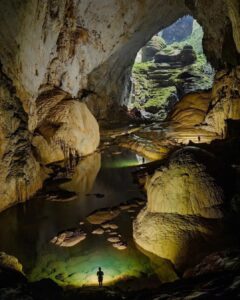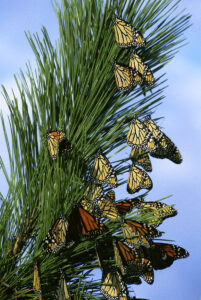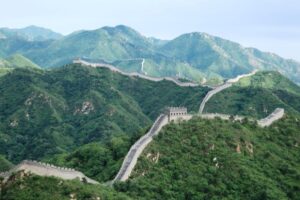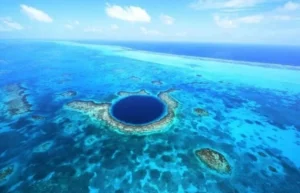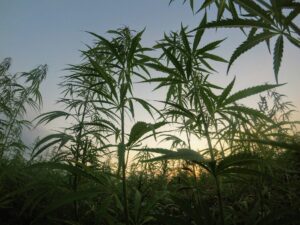Sơn Đoòng Cave, located in Phong Nha-Kẻ Bàng National Park, Vietnam, is renowned as the largest cave in the world. It was formed approximately 2 to 5 million years ago by river erosion. The cave is celebrated not only for its massive size but also for its dramatic landscapes and unique ecosystems. The entrance to Sơn Đoòng is a 30-meter high opening that leads to a breathtaking internal chamber, which contains its own weather system and a diverse range of flora and fauna. Since its discovery in the early 1990s and subsequent exploration in the 2000s, the cave has captivated adventurers, scientists, and nature enthusiasts alike.
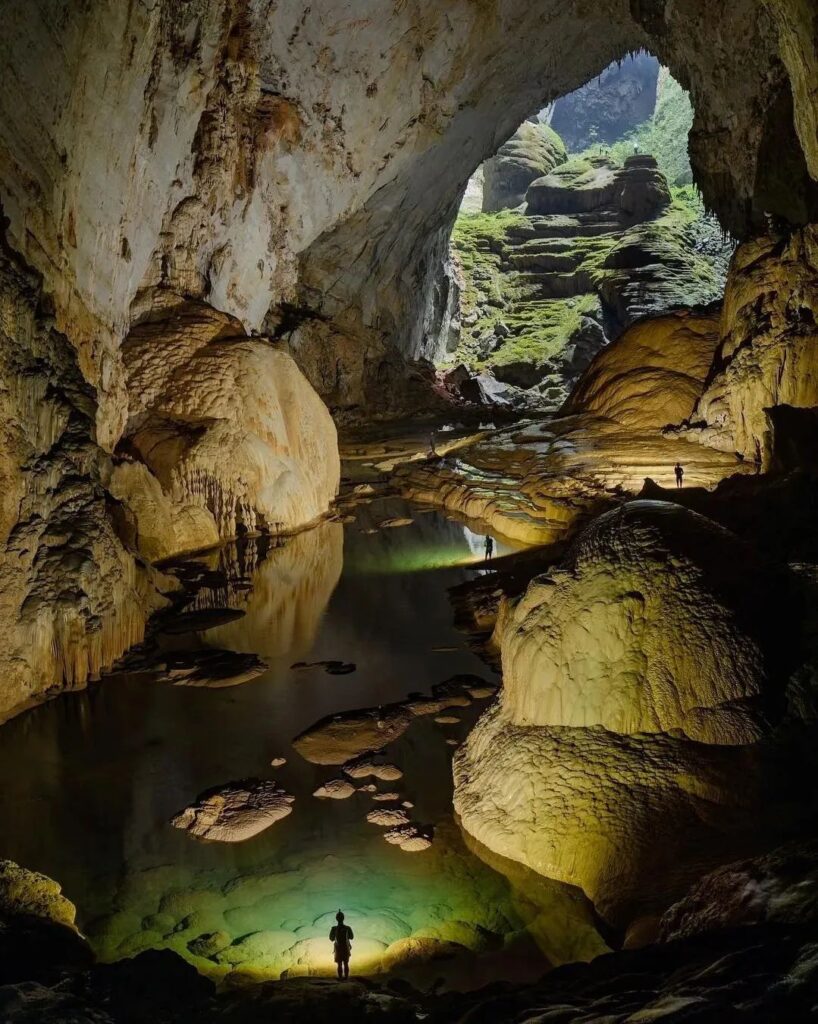
Image by @terrificholidays
Table of Contents
Location and Significance of Sơn Đoòng Cave
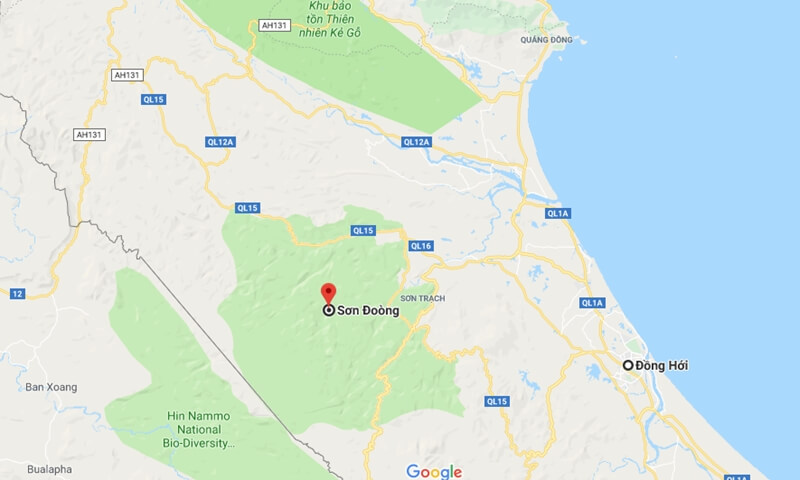
Image from Google Map
Sơn Đoòng Cave is situated in Quảng Bình Province, near the border with Laos, within Phong Nha-Kẻ Bàng National Park, a UNESCO World Heritage Site. This location is significant as the park is recognized for its outstanding geological values, biodiversity, and unique landscape. Sơn Đoòng itself is located about 30 kilometers from the town of Phong Nha and is part of a vast network of limestone caves in the region. The significance of Sơn Đoòng extends beyond its sheer size; it plays a crucial role in understanding karst topography and cave ecology. The cave’s impressive scale, with a length of over 9 kilometers, height of 200 meters in some locations, and a section wide enough to accommodate a Boeing 747, positions it as a natural wonder of global importance.
Sơn Đoòng Cave Features

Image by @hikingtheglobe
The interior of Sơn Đoòng Cave is marked by awe-inspiring features. Towering stalagmites and stalactites adorn the chambers, some reaching heights of over 70 meters. One of the cave’s most notable attributes is its impressive underground river, which contributes to the cave’s dynamic ecosystem. The cave’s climate creates a unique environment where sunlight filters through large openings in the ceiling, allowing jungle-like growth within its depths. Additionally, various chambers in the cave host diverse plant life, including rare species that thrive in its moist environment. The largest chamber, known as the “Great Wall,” boasts stunning rock formations and a variety of habitats, while a separate area known as “Garden of Edam” is filled with towering trees and lush vegetation, creating a mini-ecosystem within the cave. These features combine to make Sơn Đoòng Cave not only a geological marvel but also a vital habitat for numerous species, underscoring its ecological importance.
Historical Geological Formation of Caves in Vietnam
Vietnam’s caves are a result of extensive geological processes shaped over millions of years. The limestone karst landscapes, particularly in regions like Phong Nha-Kẻ Bàng National Park, began forming during the Late Paleozoic Era, around 400 million years ago. Over time, limestone deposits accumulated in shallow seas, followed by tectonic activities that uplifted these deposits.
Erosion from rainwater and rivers, coupled with the region’s tropical climate, contributed to the formation of extensive underground river systems and impressive cave systems. Limestone is particularly soluble in acidic conditions, which further facilitated the creation of intricate cave networks and stunning stalactite and stalagmite formations. Caves like Sơn Đoòng, which is currently the largest cave in the world, exemplify these geological wonders, showcasing vast chambers and unique ecosystems.
Influence of Local Culture on Cave Exploration
Local cultures have long influenced cave exploration in Vietnam, intertwining natural marvels with spiritual beliefs and daily life. Many caves are considered sacred and are tied to local legends and mythology. For instance, the Grotto of the Perfume Pagoda is a significant pilgrimage site, where many believe it serves as a portal to the spiritual world.
Traditional practices often involve rituals and festivals held in or near caves, promoting community engagement with these natural sites. The local ethnic groups, such as the Muong and Tho, possess rich narratives about caves that are passed down through generations. Their interpretations and usage of caves for shelter, spirituality, and gathering places have deeply impacted cave exploration, encouraging sustainable practices and preservation efforts as communities recognize their cultural and historical significance.
Pre-Discovery Curiosity About the Region's Caves
Before widespread exploration, local inhabitants had a keen curiosity about the caves scattered across the Vietnamese landscape. This curiosity was rooted in their everyday experiences, using caves for refuge, burials, and rituals, which fostered an intrinsic understanding of these geological structures.
Tales of hidden treasures and unseen wonders helped fuel imaginations. Travelers and traders from various cultures who passed through Vietnam often shared stories about the vast cave systems, intriguing outsiders. The allure of undiscovered realms within these caves captured the interest of explorers in the 19th and early 20th centuries, leading to further research into their ecological and geological significance.
Thus, the combination of geological history, cultural narratives, and a sense of wonder laid the groundwork for contemporary cave exploration in Vietnam, transforming caves into sites of both scientific curiosity and spiritual reverence.
Initial Discovery by Local Farmer Hồ Khuê in 1991
In 1991, a local farmer named Hồ Khuê was tending to his fields near the Phong Nha-Kẻ Bàng National Park in Vietnam when he stumbled upon the entrance of a vast limestone cave hidden within the dense jungle. Following a heavy rain, he noticed a rushing stream emerging from the cave’s mouth, its waters swirling dramatically as they cascaded down the rocks. Driven by curiosity, Hồ Khuê ventured inside, where he was met with staggering beauty. The cave’s interior revealed impressive stalactites and stalagmites, along with expansive chambers that seemed to stretch endlessly. Unbeknownst to him, this cave would later be known as Sơn Đoòng, recognized as the largest cave in the world.
The Cave Entrance

Image by @hikingtheglobe
The entrance to Sơn Đoòng is an imposing spectacle that measures approximately 30 meters wide and 40 meters high, set within a rugged limestone cliff. As one approaches, the sheer size of the opening is awe-inspiring, framed by lush greenery and towering trees that obscure it from view until one is nearly upon it. The entrance leads to a gloomy darkness, where sounds of dripping water echo through the cavern. Sunlight filters through crevices in the rock above, casting surreal patterns on the cave floor and illuminating the striking formations within. The cold air that escapes from the cave feels refreshing in contrast to the humid atmosphere outside, inviting adventurers to explore deeper.
Local Folklore Surrounding the Cave
Sơn Đoòng is steeped in local folklore and stories passed down through generations. Villagers tell tales of fairies inhabiting the cave, claiming that they come to the surface to dance under the moonlight. This enchanting image has led locals to believe that the cave holds mystical powers, serving as a gateway to spiritual realms. Some legends warn of guardian spirits that protect the cave’s treasures, cautioning those who would seek to exploit its riches. The folklore serves not only as a way to connect with the land but also fosters a deep respect for the natural beauty and cultural significance of Sơn Đoòng.
The Role of the British Cave Research Association (BCRA)
The British Cave Research Association (BCRA) is a pivotal organization in the field of cave exploration and research in the UK. Founded in 1968, its primary mission is to promote the study of caves, their environments, and associated geological formations. The BCRA serves as a hub for cavers, researchers, and enthusiasts, facilitating communication, research, and the sharing of knowledge.
Key roles of the BCRA include:
- Research and Preservation: The BCRA advocates for the conservation of cave environments. It educates the public about the ecological importance of caves, promoting sustainable practices to protect these sensitive ecosystems.
- Collaboration and Networking: The association fosters collaboration between caving clubs, researchers, and conservation bodies. It organizes conferences, workshops, and training sessions to enhance skills in cave surveying, mapping, and exploration techniques.
- Publications: The BCRA publishes a range of materials, including journals, reports, and guides, contributing significantly to the scientific understanding of caves. These publications cover diverse topics, from geology to biology, and provide valuable resources for researchers and cavers alike.
Exploration Led by Howard Limbert in 2009
In 2009, Howard Limbert, a prominent figure in cave exploration, led a significant expedition to explore previously uncharted cave systems. Limbert, with his extensive background in speleology, emphasized systematic and scientific approaches to cave exploration. His team focused on locating, surveying, and documenting intricate networks of caves that had remained largely unexplored due to their challenging access.
The 2009 expedition aimed to achieve several key objectives:
- Identification of New Caves: By employing advanced surveying techniques, the team sought to find and document new caves, increasing the understanding of the local karst landscape.
- Scientific Research: The exploration provided opportunities to collect data on cave geology, hydrology, and biology, contributing to the broader scientific knowledge of cave systems.
Mapping the Cave Systems and Understanding Its Structure
Accurate mapping of cave systems is crucial for both scientific research and conservation efforts. The process undertaken by Limbert and his team involved advanced techniques, such as:
- 3D Laser Scanning: This technology allowed for detailed three-dimensional mapping of cave features, capturing minute details of the cave structure and topography.
- GPS and GIS Technologies: Integrating Global Positioning System (GPS) data with Geographic Information Systems (GIS) facilitated effective spatial analysis and visualization of cave networks, helping to understand their relationships within the broader landscape.
- Surveying Techniques: Using precise surveying instruments, the team meticulously recorded the dimensions and layout of the caves, contributing to comprehensive geological and hydrological models.
Understanding the structure of cave systems aids in analyzing their formation, evolution, and ecological significance. This meticulous mapping helps inform conservation strategies, ensuring the protection of these fragile underground environments.
Unique Ecosystems and Biodiversity Found Within the Cave
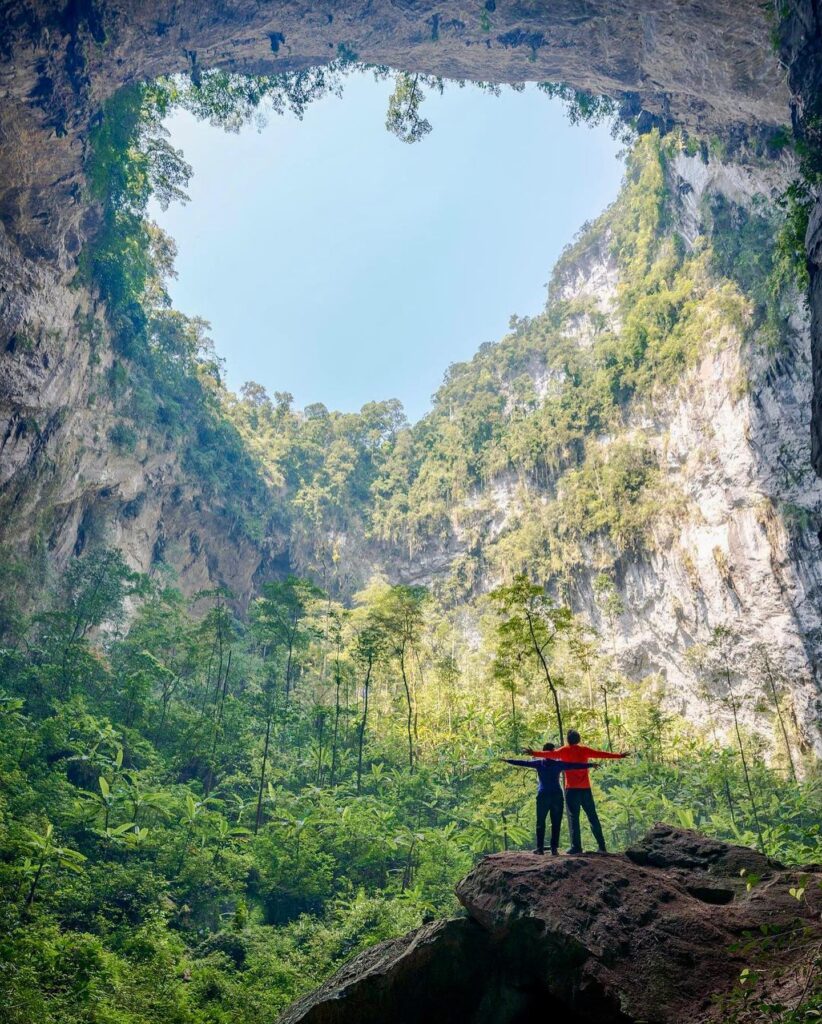
Image by @hikingtheglobe
Sơn Đoòng Cave, located in Vietnam’s Phong Nha-Kẻ Bàng National Park, is the largest cave in the world and hosts unique ecosystems that thrive in its vast, dark interiors. The cave features a range of microhabitats, including moist, shaded areas and mineral-rich pools. These conditions foster diverse flora and fauna, including rare species and endemic organisms. The most notable inhabitants are the various species of bats, which play a crucial role in pollination and seed dispersal. Additionally, unique fungi and mosses colonize the cave walls, adapting to low light levels. The cave’s interconnected waterways are home to aquatic species, some still unexplored, showcasing a delicate balance of life in an isolated environment.
Geological Significance of Sơn Đoòng
Sơn Đoòng Cave is a geological marvel formed approximately 2 to 5 million years ago through the dissolution of limestone by acidic water. Its enormous chambers, towering stalagmites, and the world’s largest stalagmite (over 70 meters high) reflect significant geological processes. The cave provides insights into karst formation and offers a glimpse into Earth’s geological history. The presence of ancient fossils adds to its geological significance, presenting data on past climatic conditions. The cave’s unique formation and structure allow researchers to study natural processes such as erosion and sedimentation in real-time, contributing invaluable knowledge to geology and environmental science.
Research Opportunities for Ecologists and Geologists
Sơn Đoòng Cave presents abundant research opportunities for ecologists and geologists alike. For ecologists, the cave’s unique ecosystems provide a natural laboratory to study species adaptations to extreme environments, including low light and high humidity. Research on the cave’s biodiversity can lead to discoveries of new species and insights into conservation strategies for fragile ecosystems.
Geologists can focus on the cave’s formation processes, examining sediment layers, mineral deposits, and fossil records. The cave can help better understand the broader implications of climate change on karst landscapes. Interdisciplinary studies combining ecology and geology could further enhance our understanding of how geological and biological processes interact in unique environments.
Sơn Đoòng Cave serves as a vital resource for scientific exploration, providing a deeper understanding of Earth’s natural history and the complex relationships within ecosystems.
Opening the Cave to Tourism in 2013
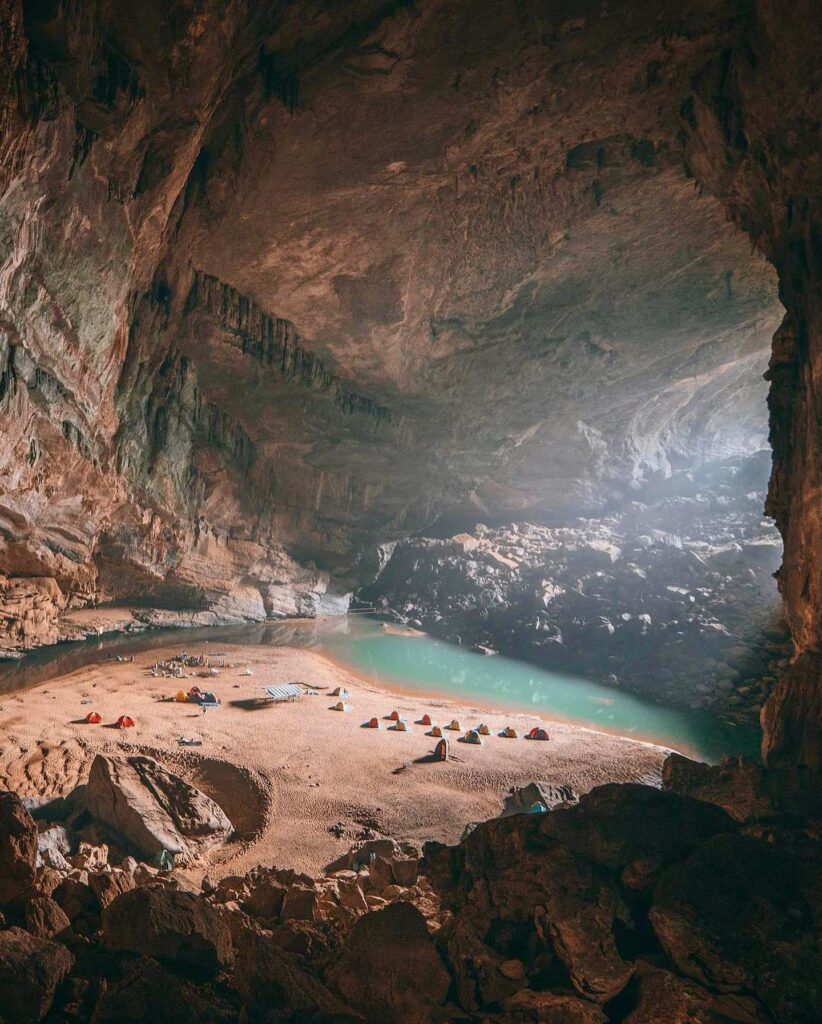
Image by @hikingtheglobe
In 2013, a significant landmark was reached with the opening of a previously secluded cave to tourism. This cave, rich in geological formations and ancient artifacts, was unveiled with much anticipation. The initiative aimed to promote eco-tourism, attracting visitors interested in natural wonders and education. The government collaborated with local tourism boards to ensure proper management and safety protocols. Infrastructure enhancements included guided tours, pathways, and informational signage, all aimed at enriching visitor experiences while minimizing the cave’s ecological footprint. The grand opening featured ceremonies to celebrate the cave’s significance and to educate visitors on its natural history.
Balancing Exploration with Preservation of the Ecosystem
Balancing tourism with ecological preservation became a crucial focus following the cave’s opening. Authorities implemented strict guidelines to minimize human impact, such as limiting visitor numbers and regulating access to sensitive areas. Tour guides were trained to emphasize conservation messages, fostering a sense of responsibility among tourists. Additionally, studies were conducted to monitor the cave’s ecosystem, assessing how human activity affected its delicate environment. Regular maintenance and rehabilitation programs were established to ensure the cave remained a thriving habitat for unique species. By promoting awareness of biodiversity and the importance of preservation, stakeholders aimed to create a sustainable tourism model that protected the cave’s natural heritage.
Impact on Local Economy and Community Involvement
The introduction of cave tourism had a profound impact on the local economy. It created jobs in tourism services, including guides, hospitality, and retail, boosting employment opportunities for residents. Small businesses flourished as they adapted to meet the needs of visitors, from restaurants to local craft shops. Furthermore, a portion of the tourism revenue was allocated to community development projects, enhancing public facilities and education.
Community involvement was encouraged through local partnerships. Residents were trained as guides and engaged in decision-making processes about tourism management. This involvement fostered pride in local heritage and provided a platform for cultural exchange. As a result, tourism not only boosted the economy but also strengthened community ties, making residents active participants in preserving their cultural and natural resources.
Facts and Figures about Sơn Đoòng Cave
Dimensions:
- Length: Sơn Đoòng Cave, located in Phong Nha-Kẻ Bàng National Park, Vietnam, measures approximately 9 kilometers (5.6 miles) long.
- Height: The cave is known for its impressive height, with sections reaching up to 200 meters (656 feet) high. The towering stalagmites contribute to its grandeur.
- Volume: It is considered one of the largest caves in the world by volume, estimated at around 38.5 million cubic meters (1.36 billion cubic feet), making it a significant geological marvel.
Comparisons with Other Famous Caves Globally:
- Sơn Đoòng is often compared to other renowned caves such as Mammoth Cave in the United States, which, while longer at over 600 kilometers (373 miles), has a smaller volume.
- In terms of height, the Cave of the Crystals in Mexico is notable, but Sơn Đoòng surpasses it in overall size. Similarly, the Hang Son Doong lens shape distinguishes it from other vast caves like the Eisriesenwelt in Austria, known for its ice formations.
- The cave’s unique ecosystems and large chambers set it apart from tourist-frequented locations like the Waitomo Caves in New Zealand, famous for their glowworms.
Notable Formations and Features within the Cave:
- Stalagmites and Stalactites: The cave features colossal stalagmites, some reaching over 10 meters (33 feet) tall, formed from limestone deposits over millennia.
- Unique Ecosystems: Inside Son Doong, there are lush jungles with diverse flora and fauna, including rare species such as the red-shanked douc langur.
- “The Great Wall of Vietnam”: This limestone wall stands at almost 90 meters (295 feet) tall, a striking natural formation within the cave.
- U-shaped tunnels and underground rivers: These waterways help shape the cave’s landscape, adding to its ecological importance.
- Diverse Microclimates: Different sections of the cave create varying microclimates, allowing unique plant life and providing refuge for various animal species.
Sơn Đoòng Cave is a geological wonder known for its grand dimensions, distinctive natural features, and ecological diversity, which together make it a UNESCO World Heritage Site.

















